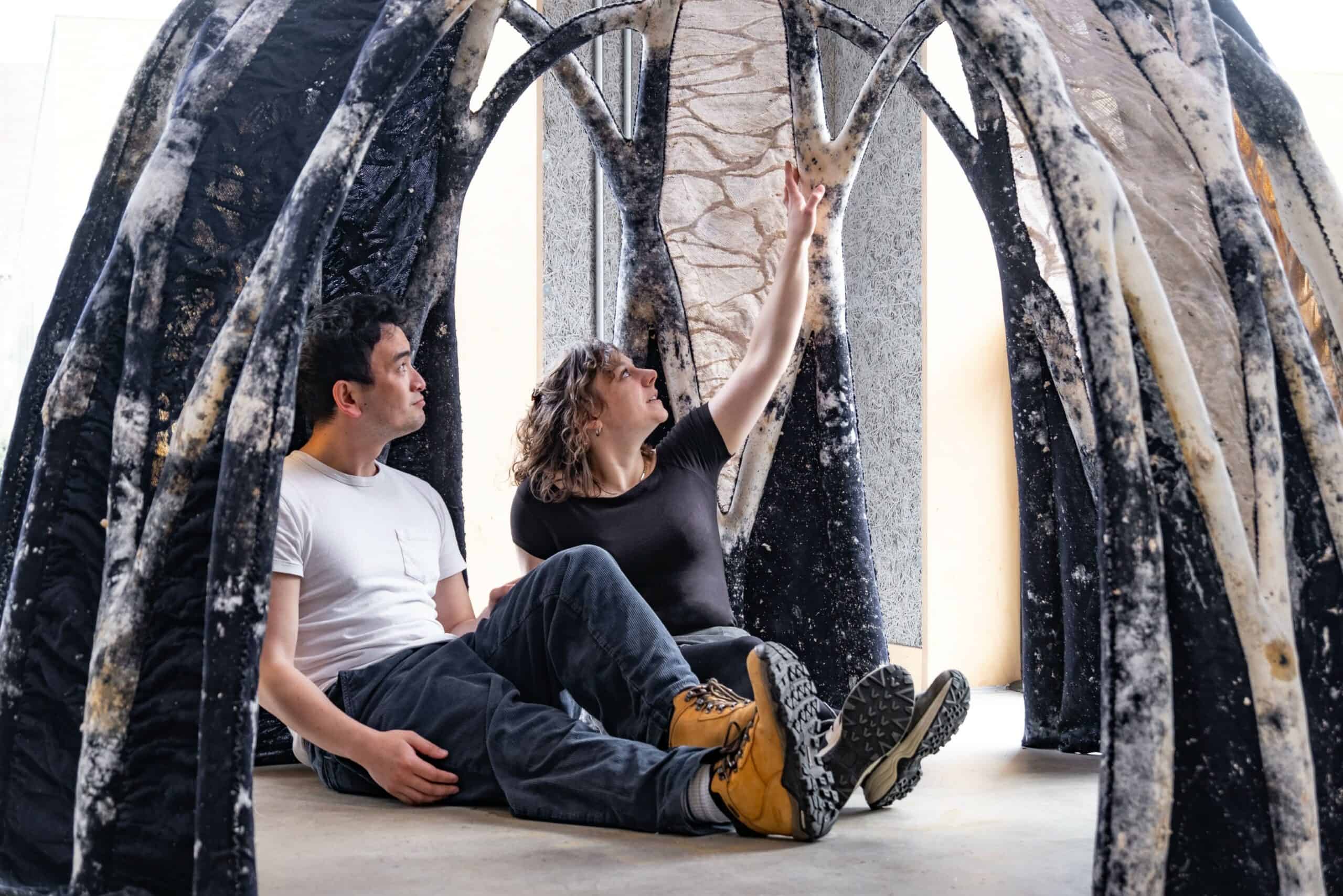If concrete were a country, it would be the third largest emitter of greenhouse gases on Earth. We need better and more sustainable building materials, and researchers are exploring unconventional options. Now, an international team of scientists has found a way to grow building materials by using knitted molds and the root networks of fungi.

Previous studies have looked at creating composites based on mycelium, part of the root network of fungi, but the shape and growth limits of the material have made it difficult to create applications. Some fungus-based materials are already used commercially in packaging and insulation panels thanks to their thermal and acoustic properties.
But using them in construction is a whole new ball game.
To accomplish this, researchers utilized knitted molds as a flexible framework or ‘formwork’ to produce a composite known as ‘mycocrete.’ This innovative material is not only stronger but also more adaptable in terms of shape and form, enabling scientists to cultivate lightweight and environmentally-friendly construction materials.
The building and construction sector’s energy consumption and greenhouse gas emissions reached an all-time high last year, according to a UN report. The sector accounted for 34% of energy demand despite an increase in energy efficiency investment and lower energy intensity, the UN said.
“Our ambition is to transform the look, feel and wellbeing of architectural spaces using mycelium in combination with biobased materials such as wool, sawdust and cellulose,” Jane Scott, study author from Newcastle University, said in a statement. The study was published in the journal Frontiers in Bioengineering and Biotechnology.
Simply put, our existing materials just don’t cut it. We need something better.
Making composites
To create mycelium composites, scientists combine mycelium spores with nutrient-rich grains and a growth medium. This mixture is then packed into a mold and placed in a dark, warm, and humid environment, allowing the mycelium to flourish. Once the desired density is achieved, prior to the development of mushrooms, the composite is dried out.
This process could be a cheap and sustainable alternative to foam, timber, and plastic. However, the growth of mycelium needs oxygen, introducing limitations to the size and shape of conventional rigid molds and restricting current applications. Knitted textiles offer a way around, with oxygen-permeable molds that could change from flexible to stiff as mycelium grows.
But textiles can be overly flexible, making it challenging to achieve consistent packing of the molds. With this in mind, the researchers embarked on a mission to create a mycelium mixture and a production system that could effectively harness the advantages offered by knitted forms. “Knitting is an incredibly versatile 3D manufacturing system,” said Scott.
A way forward
In their study, the scientists prepared samples of conventional mycelium composite as controls, which were cultivated alongside samples of myconrete. These included other components such as paper powder, paper fiber clumps, water, glycerin, and xanthan gum. This paste was designed to be injected into the knitted form using an injection gun.
Once dried, the samples underwent rigorous strength tests in tension, compression, and flexion. This showed that the mycocrete samples had superior strength compared to the conventional mycelium composite samples. Furthermore, mycocrete outperformed mycelium composites that were grown without the use of knitted formwork.
After the tests, the researchers then constructed a proof-of-concept prototype structure known as BioKnit. This freestanding dome was meticulously crafted as a single, unified piece, devoid of any joins that could potentially serve as weak points. This was made possible by leveraging the flexibility and adaptability of the knitted formwork, they explained.
“The mechanical performance of the mycocrete used in combination with permanent knitted formwork is a significant result, and a step towards the use of mycelium and textile biohybrids within construction,” said Scott.


